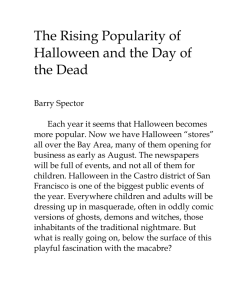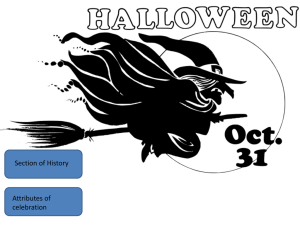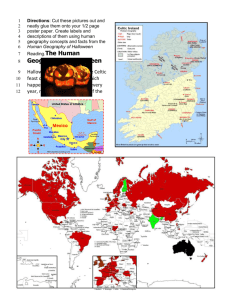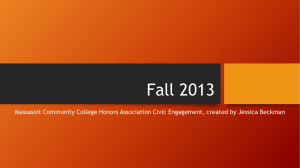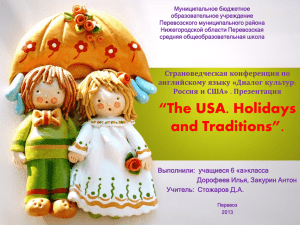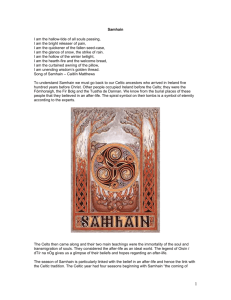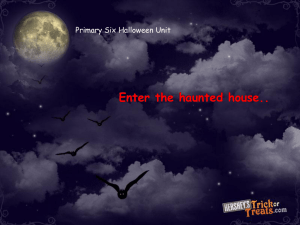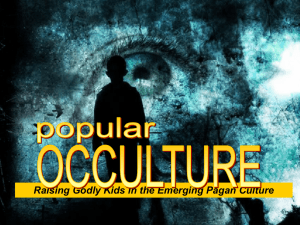The halloween
advertisement
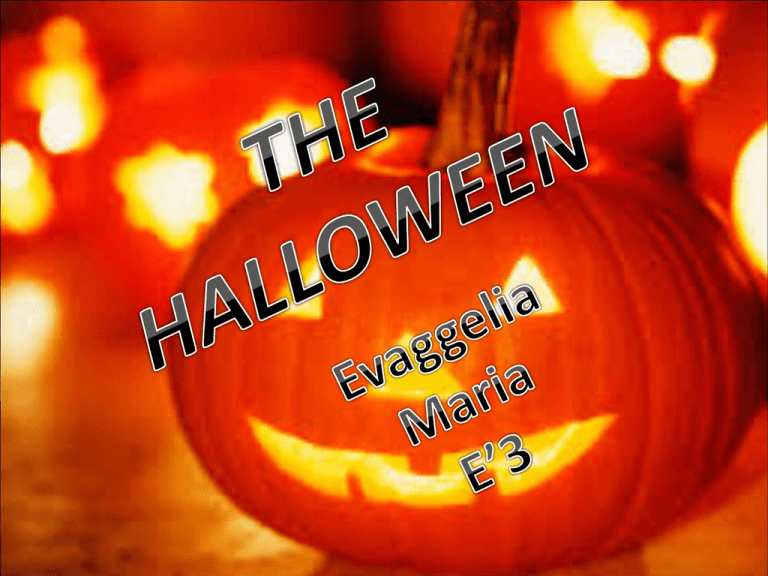
• Halloween a contraction of "All Hallows' Evening"), also known as All Hallows' Eve, is a yearly celebration observed in a number of countries on October 31, the eve of the Western Christian feast of All Hallows' Day. It initiates the triduum of Hallowmas, the time in the liturgical year dedicated to remembering the dead, including saints (hallows), martyrs, and all the faithful departed believers. • According to many scholars, All Hallows' Eve is a Christianized feast initially influenced by Celtic harvest festivals with possible pagan roots, particularly the Gaelic Samhain Other academics maintain that it originated independently of Samhain and has solely Christian roots. Typical festive Halloween activities include trick-ortreating (or the related "guising" or "trunk-or-treating"), attending costume parties, decorating, carving pumpkins into jack-o'-lanterns, lighting bonfires, apple bobbing, visiting haunted attractions, playing pranks, telling scary stories, and watching horror films. • Samhain Calan Gaeaf marked the end of the harvest season and beginning of winter or the 'darker half' of the year. Like Beltane/Calan Mai, it was seen as a liminal time, when the spirits or fairies (the Aos Sí) could more easily come into our world and were particularly active. Most scholars see the Aos Sí as "degraded versions of ancient gods [...] whose power remained active in the people's minds even after they had been officially replaced by later religious beliefs". The Aos Sí were both respected and feared, with individuals often invoking the protection of God when approaching their dwellings.[ At Samhain, it was believed that the Aos Síneeded to be propitiated to ensure that the people and their livestock survived the winter. Offerings of food and drink, or portions of the crops, were left for the Aos Sí. The souls of the dead were also said to revisit their homes. Places were set at the dinner table or by the fire to welcome them.[The belief that the souls of the dead return home on one night or day of the year seems to have ancient origins and is found in many cultures throughout the world.[In 19th century Ireland, "candles would be lit and prayers formally offered for the souls of the dead. After this the eating, drinking, and games would begin".Throughout the Gaelic and Welsh regions, the household festivities included rituals and games intended to divine one's future, especially regarding death and marriage.Nuts and apples were often used in these divination rituals. Special bonfires were lit and there were rituals involving them. Their flames, smoke and ashes were deemed to have protective and cleansing powers, and were also used for divination. It is suggested that the fires were a kind of imitative or sympathetic magic – they mimicked the Sun, helping the "powers of growth" and holding back the decay and darkness of winter.Christian i • Today's Halloween customs are thought to have been influenced by folk customs and beliefs from the Celtic-speaking countries, some of which have pagan roots, and others which may be rooted in Celtic Christianity. Indeed, Jack Santino, an academic folklorist, writes that "the sacred and the religious are a fundamental context for understanding Halloween in Northern Ireland, but there as throughout Ireland an uneasy truce exists between customs and beliefs associated with Christianity and those associated with religions that were Irish before Christianity arrived". Historian Nicholas Rogers, exploring the origins of Halloween, notes that while "some folklorists have detected its origins in the Roman feast of Pomona, the goddess of fruits and seeds, or in the festival of the dead called Parentalia, it is more typically linked to the Celtic festival of Samhain", which comes from the Old Irish for "summer's end". Samhain (pronounced SAH-win or SOW-in) was the first and most important of the four quarter days in the medieval Gaelic calendar and was celebrated in Ireland, Scotland and the Isle of Man.[22][23] It was held on or about October 31 – November 1 and kindred festivals were held at the same time of year by the Brittonic Celts; for example Calan Gaeaf (in Wales), Kalan Gwav (in Cornwall) and Kalan Goañv (in Brittany). Samhain and Calan Gaeaf are mentioned in some of the earliest Irish and Welsh literature. The names have been used by historians to refer to Celtic Halloween customs up until the 19th century,and are still the Gaelic and Welsh names for Halloween. • Development of artifacts and symbols associated with Halloween formed over time. Jack-o'-lanterns are traditionally carried by guisers on All Hallows' Eve in order to frighten evil spirits. There is a popular Irish Christian folktale associated with the jack-o'-lantern, which in lore, is said to represent a "soul who has been denied entry into both heaven and hell": On route home after a night's drinking, Jack encounters the Devil who tricks him into climbing a tree. A quick-thinking Jack etches the sign of the cross into the bark, thus trapping the Devil. Jack strikes a bargain that Satan can never claim his soul. After a life of sin, drink, and mendacity, Jack is refused entry to heaven when he dies. Keeping his promise, the Devil refuses to let Jack into hell and throws a live coal straight from the fires of hell at him. It was a cold night, so Jack places the coal in a hollowed out turnip to stop it from going out, since which time Jack and his lantern have been roaming looking for a place to rest. TRICK-OR-TREATING, TRUNK-ORTREATING AND GUISING • Trick-or-treating is a customary celebration for children on Halloween. Children go in costume from house to house, asking for treats such as candy or sometimes money, with the question, "Trick or treat?" The word "trick" refers to "threat" to perform mischief on the homeowners or their property if no treat is given. The practice is said to have roots in the medieval practice of mumming, which is closely related to souling (discussed above). John Pymm writes that "many of the feast days associated with the presentation of mumming plays were celebrated by the Christian Church."These feast days included All Hallows' Eve, Christmas, Twelfth Night and Shrove Tuesday. Mumming, practised in Germany, Scandinavia and other parts of Europe, involved masked persons in fancy dress who "paraded the streets and entered houses to dance or play dice in silence." Their "basic narrative framework is the story of St. George and the Seven Champions of Christendom. • • • Halloween costumes are traditionally modeled after supernatural figures such as vampires, monsters, ghosts, skeletons, witches, and devils. Over time, in the United States the costume selection extended to include popular characters from fiction, celebrities, and generic archetypes such as ninjas and princesses.] Dressing up in costumes and going "guising" was prevalent in Ireland and Scotland at Halloween by the late 19th century. Costuming became popular for Halloween parties in the US in the early 20th century, as often for adults as for children. The first massproduced Halloween costumes appeared in stores in the 1930s when trick-or-treating was becoming popular in the United States. Rev. Dr. Eddie J. Smith, in his book Halloween, Hallowed Be Thy Name, offers a religious perspective to the wearing of costumes on All Hallows' Eve, suggesting that dressing up as fictional creatures "who at one time caused us to fear and tremble", people are able to poke fun at the Christian figure of Satan. Images of skeletons and the dead are traditional decorations used as memento mori. THANKS FOR WATCHING • Evaggelia • Maria • E’3
